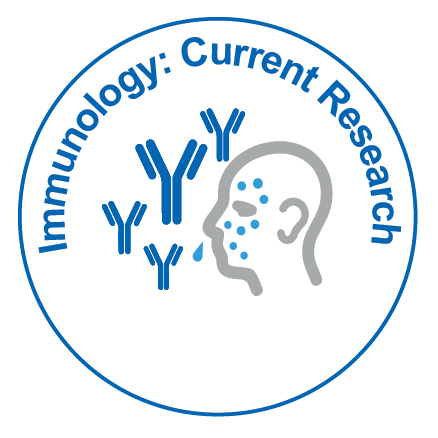Understanding Antigens: Key Triggers of the Immune Response
Received: 03-Mar-2025 / Manuscript No. icr-25-166418 / Editor assigned: 05-Mar-2025 / PreQC No. icr-25-166418 (PQ) / Reviewed: 19-Mar-2025 / QC No. icr-25-166418 / Revised: 24-Mar-2025 / Manuscript No. icr-25-166418 (R) / Accepted Date: 30-Mar-2025 / Published Date: 30-Mar-2025
Abstract
Antigens are fundamental components in the functioning of the immune system, serving as molecular signals that trigger immune responses. These substances, typically derived from pathogens such as bacteria, viruses, or other foreign entities, are recognized by immune cells through highly specific receptors. This article explores the structural and functional characteristics of antigens, including their classification into self and non-self-types, and their interaction with immune components such as B cells, T cells, and antigen-presenting cells. The role of epitopes, antigen presentation via the major histocompatibility complex (MHC), and the distinction between immunogenic and non-immunogenic antigens are discussed in detail. Understanding the mechanisms by which antigens stimulate both innate and adaptive immunity is essential for advancements in immunodiagnostics, vaccine development, and immunotherapy. This review provides a foundational overview for students and researchers seeking to grasp the critical role of antigens in initiating and shaping immune responses.
Keywords
Antigen-presenting cells; Major histocompatibility complex; Immunogenicity; Pathogen recognition; Adaptive immunity; Innate immunity; Vaccine development
Introduction
The immune system plays a vital role in protecting the body against infections, malignancies, and other foreign threats. Central to this defense mechanism is the ability to recognize and respond to antigens—molecular structures typically found on the surfaces of pathogens or abnormal host cells [1]. Antigens act as identifiers, triggering a range of immune responses designed to neutralize or eliminate the perceived threat. Antigens can originate from outside the body (exogenous antigens), such as those from viruses, bacteria, and allergens, or from within (endogenous antigens), such as mutated or infected host cells [2]. The immune system recognizes these antigens through highly specific interactions involving immune cells, such as B lymphocytes and T lymphocytes, as well as molecules like antibodies and Major Histocompatibility Complex (MHC) proteins. These interactions form the basis of both innate and adaptive immunity, two coordinated arms of the immune system that work together to defend the body [3],[4]. Understanding how antigens are structured, processed, and presented to the immune system is crucial for grasping the complexities of immune activation. This knowledge has profound implications in fields ranging from vaccine development to autoimmune disease management and cancer immunotherapy [5]. This article explores the fundamental nature of antigens, their types, the mechanisms by which they are recognized and presented, and their critical roles in shaping effective immune responses.
Methodology
This review article is based on a comprehensive literature analysis of peer-reviewed publications, textbooks, and scientific databases relevant to antigen structure and function. Sources were selected from PubMed, Scopus, and Google Scholar using keywords such as antigen, immune response, MHC, epitope, and immunogenicity. Articles published between 2000 and 2024 were prioritized, with particular emphasis on immunological mechanisms involving antigen recognition and processing [6]. The information gathered was categorized into major themes: antigen types, antigen-presenting mechanisms, immune cell interactions, and clinical implications such as vaccine development. Comparative analyses were employed to identify consensus and discrepancies across current immunological findings [7].
Results
The literature review revealed that antigens are primarily categorized into self and non-self-antigens, with non-self-antigens further subdivided into exogenous and endogenous types. The epitope, or antigenic determinant, was consistently described as the specific part of an antigen recognized by immune receptors [8]. Major Histocompatibility Complex (MHC) molecules were identified as essential for antigen presentation to T cells, facilitating adaptive immune activation. Class I MHC molecules present intracellular antigens to CD8+ cytotoxic T cells, while Class II MHC molecules present extracellular antigens to CD4+ helper T cells [9]. Further analysis highlighted that B cells recognize antigens directly through membrane-bound antibodies, whereas T cells require processed antigen fragments presented by MHC molecules. The strength of an immune response was shown to depend on the antigen’s size, complexity, dose, and route of entry [10]. Immunogenicity—the ability of an antigen to provoke an immune response—was influenced by the host’s genetic background and the presence of adjuvants in vaccine formulations.
Conclusion
Antigens are indispensable triggers of immune responses, acting as molecular identifiers that enable the immune system to detect and respond to pathogens and abnormal cells. Their recognition by B cells, T cells, and antigen-presenting cells initiates a cascade of innate and adaptive immune mechanisms essential for host defense. A deeper understanding of antigen properties and their immunological roles has direct applications in disease diagnosis, vaccine development, and immunotherapy. As immunological research advances, so does the potential to manipulate antigen recognition for therapeutic benefit, underscoring the continued importance of antigen study in biomedical science.
Acknowledgement
None
Conflict of Interest
None
Citation: Mariela E (2025) Understanding Antigens: Key Triggers of the ImmuneResponse. Immunol Curr Res, 9: 248.
Copyright: © 2025 Mariela E. This is an open-access article distributed under theterms of the Creative Commons Attribution License, which permits unrestricteduse, distribution, and reproduction in any medium, provided the original author andsource are credited.
Select your language of interest to view the total content in your interested language
Share This Article
Recommended Journals
Open Access Journals
Article Usage
- Total views: 420
- [From(publication date): 0-0 - Dec 08, 2025]
- Breakdown by view type
- HTML page views: 334
- PDF downloads: 86
